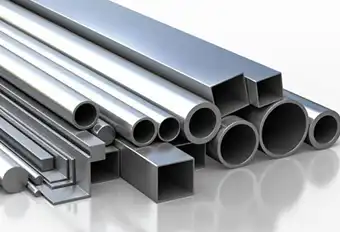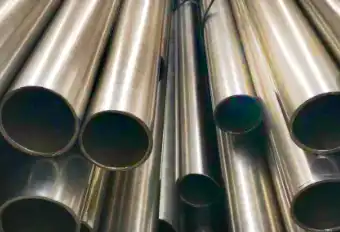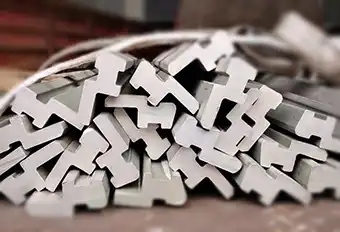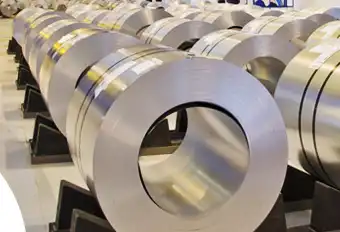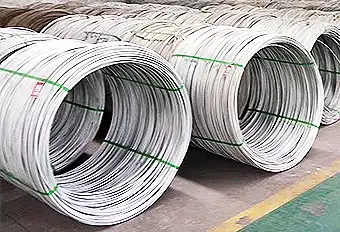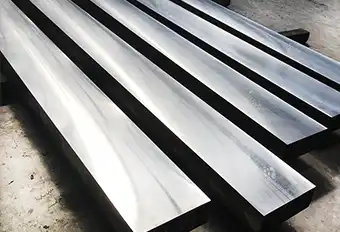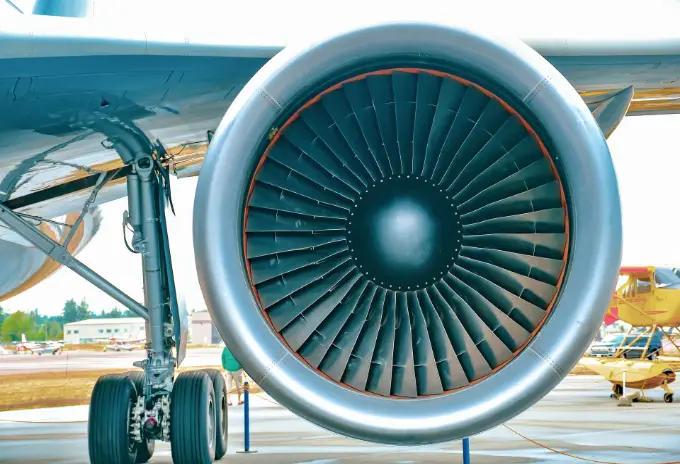Carbon steel, the most widely used engineering material, accounts for approximately 85%, of the annual steel production worldwide. Despite its relatively limited corrosion resistance, carbon steel is used in large tonnages in marine applications, nuclear power and fossil fuel power plants, transportation, chemical processing, petroleum production and refining, pipelines, mining, construction and metal-processing equipment.
The cost of metallic corrosion to the total economy must be measured in hundreds of millions of dollars (or euros) per year. Because carbon steels represent the largest single class of alloys in use, both in terms of tonnage and total cost, it is easy to understand that the corrosion of carbon steels is a problem of enormous practical importance. This is the reason for the existence of entire industries devoted to providing protective systems for irons and steel.
Carbon steels are by their nature of limited alloy content, usually less than 2% by weight for total of additions. Unfortunately, these levels of addition do not generally produce any remarkable changes in general corrosion behavior. One possible exception to this statement would be weathering steels, in small additions of copper, chromium, nickel and phosphorus produce significant reduction in corrosion rate in certain environments.
Because corrosion is such a multifaceted phenomenon, it is generally useful to attempt to categorize the various types. This is usually done on environmental basis. In this article, atmospheric corrosion, aqueous corrosion and some other corrosion types of interest, such as corrosion in soils, concrete and boilers and heating plants will be addressed.
Atmospheric corrosion
Atmospheres are often classified as being rural, industrial or marine in nature. Two decidedly rural environments can differ widely in average yearly temperature and rainfall patterns, mean temperature, and perhaps acid rain, can make extrapolations from past behavior less reliable.
The corrosion of carbon steel in the atmosphere and in many aqueous environments is best understood from a film formation and brake down standpoint. It is an inescapable fact that iron in the presence of oxygen and water is thermodynamically unstable with respect to its oxides. Because atmospheric corrosion is an electrolytic process, the presence of an electrolyte is required. This should not be taken to mean that the steel surface must be awash in water; a very thin adsorbed film of water is all that is required.
During the actual exposure, the metal spends some portion of the time awash with water because of rain or splashing and a portion of the time covered with a thin adsorbed water film. The portion of time spent covered with the thin water film depends quite strongly on relative humidity at the exposure site. This fact has led many corrosion scientists to investigate the influence of the time of wetness on the corrosion rate.
Rusting of iron depends on relative humidity and time of exposure in atmosphere containing 0.01% SO2. The increase in corrosion rate produced by the addition of SO2 is substantial. Oxides of nitrogen in the atmosphere would also exhibit an accelerating effect on the corrosion of steel. Indeed, any gaseous atmospheric constituent capable of strong electrolytic activity should be suspected as being capable of increasing the corrosion rate of steel.
Because carbon steels are not very highly alloyed, it is not surprising that most grades do not exhibit large differences in atmospheric-corrosion rate. Nevertheless, alloying can make changes in the atmospheric-corrosion rate of carbon steel. The elements generally found to be most beneficial in this regard are copper, nickel, silicon, chromium and phosphorus. Of these, the most striking example is that of copper, increases from 0.01-0.05%, decrease the corrosion rate by a factor of two to three. Additions of the above elements in combination are generally more effective than when added singly, although the effects are not additive.
Aqueous Corrosion
Carbon steel pipes and vessels are often required to transport water or are submerged in water to some extent during service. This exposure can be under conditions varying temperature, flow rate, pH, and other factors, all of which can alter the rate of corrosion. The relative acidity of the solution is probably the most important factor to be considered. At low pH the evolution of hydrogen tends to eliminate the possibility of protective film formation so that steel continues to corrode but in alkaline solutions, the formation of protective films greatly reduces the corrosion rate. The greater alkalinity, the slower the rate of attack becomes. In neutral solutions, other factors such as aeration, became determining so that generalization becomes more difficult.
The corrosion of steels in aerated seawater is about the same overall as in aerated freshwater, but this is somewhat misleading because the improved electrical conductivity of seawater can lead to increased pitting. The concentration cells can operate over long distance, and this leads to a more nonuniform attack than in fresh water. Alternate cycling through immersion and exposure to air produces more pitting attack than continuous immersion. The effect of various alloying addition and exposure conditions on the corrosion behavior is shown in Table 1.
Table 1. Comparison of results under different type of exposure
| Effects of alloy selection, chemical composition and alloy additions |
Sea air |
Freshwater |
Alternately wet with seawater or Spray and dry |
Continuously wet with seawater |
| Ferrous alloys |
Pockmarked |
Vermiform on cleaned bars |
Pitting, particularly on bars with scale |
Pitting, particularly on bars with scale |
| Wrought iron versus carbon steel |
Steel superior to wrought and ingot irons |
Iron and steel equal in low-moor areas |
Low-moor iron superior to carbon steel |
Low-moor iron superior to carbon steel |
| Sulfur and phosphorus content |
Best results when S and P are low |
Best results when S and P are low |
Best results when S and P are low |
Apparently little influence |
| Addition of copper |
Beneficial: Effect increasing with copper content |
Beneficial: 0.635% Cu almost as good as 2.185% Cu |
Beneficial: 0.635% and 2.185% Cu much the same |
0.635% Cu slightly beneficial: 2.185% Cu somewhat less so |
| Addition of nickel |
3.75% Ni superior even to 2% Cu; 36% Ni almost perfect after 15-year exposure |
3.75%Ni superior even to 2%Cu; 36%Ni excellent resistance |
3.75%Ni beneficial usually more so than Cu: 36%Ni the best metal in the set |
3.75% Ni slightly beneficial and slightly superior to Cu: 36% Ni the best metal in the set |
| Addition of 13.5% Cr |
Excellent resistance to corrosion: cold blast metal perfect after 15-year exposure: equal to 36% Ni steel |
Excellent resistance to corrosion: equal to 36% Ni steel |
Subject to severe localized corrosion that virtually destroys the metal |
Subject to severe localized corrosion that virtually destroys the metal |
| Behavior of cast irons |
Excellent resistance to corrosion: cold blast metal superior to hot: no graphitic corrosion |
Undergoes graphitic corrosion |
Undergoes graphitic corrosion |
Undergoes graphitic corrosion |
Interestingly, the corrosion rates of specimens completely immersed in seawater do not appear to depend on the geographical location of the test site; therefore, by inference, the mean temperature does not appear to play an important role.
This constancy of the corrosion rate in seawater has been attributed to the more rapid fouling of the exposed steel by marine organisms, such as barnacles and algae, in warmer seas. It is further speculated that this fouling offsets that increases expected from the temperature rise.
Soil Corrosion
The response of carbon steel to soil corrosion depends primarily on the nature of the soil and certain other environmental factors, such as the availability to moisture and oxygen. These factors can lead to extreme variations in the rate of the attack. For example, under the worst condition a buried vessel may perforate in less than one year, although archeological digs in arid desert regions have uncovered iron tools that are hundreds of years old.
Some general rules can be formulated. Soils with high moisture content, high electrical conductivity, high acidity, and high dissolved salts will be most corrosive. The effect of aeration on soils is somewhat different from the effect of aeration in water because poorly aerated conditions in water can lead to accelerated attack by sulfate-reducing anaerobic bacteria.
The effect of low levels of alloying additions on the soil corrosion of carbon steels is modest. Some data seems to show a small benefit of 1%Cu and 2.5% Ni on plain carbon steel.
The weight loss and maximum pit depth in soil corrosion can be represented by an equation of the form:
Z = a·tm
Where:
-
Z - either the weight of loss of maximum pit depth
-
T - time of exposure
-
a and m - constants that depend on the specific soil corrosion situation.


